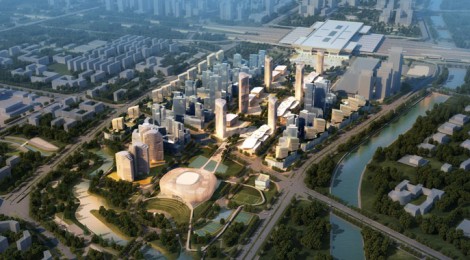
Mega Cities – An Inescapable Opportunity
by FRANCIS GLARE
Living in an urbanised world. In the 19th century, London was the only world city of more than five million people. Now there are at least 54, mostly in Asia, and an increasing number of cities with more than 10 million inhabitants. People living in urban locations have outnumbered those in rural areas since 2007 and two in three people born in the next 30 years will live in cities. So cities, and big cities, are inescapable. They have a dominant impact on every facet of our existence from our social and economic networks to our difficult relationship with natural resources.
The megacity is a prospect that both inspires and horrifies commentators. The case for is presented in terms of cities as creative, entrepreneurial and enriching places; the case against is couched in terms of social and environmental ills, the increasing scale of cities giving rise to increasing disparity. City planners are accused of dehumanising tendencies in city planning responses and the servicing of the city denudes the hinterland of resources.
Regardless of the polemic, the evidence of those with choice is frequently the creation of protected urban enclaves, the city to be endured for the promise of the weekend retreat – this is as true of Chengdu as it is of London. Is the city really the fount of all evil and are we really this schizophrenic that we cannot reconcile our human desires in one place? In recent years BDP has contributed to research into the future of ‘humane cities’ and ‘smart cities’ whilst pondering the responses from city governments. These range from the visionary and bold to the anxious and panicked, illustrating the breadth of the debate on
cities and urbanisation. But for all this breadth, in 2013 we discern the balance moving away from viewing the city as a necessary evil to be managed in a fairer and more equitable way, to the city as the solution to the challenges of our age.
Urbanisation is now seen as good news rather than a necessary and squalid by-product of economic development. Many experts have come to realise that people are better off when they live in a city. This is not to ignore the problems of urban life,
particularly in fast growing cities in say Asia and Africa. But even in the shanty towns the opportunities are greater than in the
rural hinterland. As the city – whether historic, regional, functional, capital or mega – is the context for the great majority of BDP’s work, we are ardent enthusiasts for urban places. But in 2013, it is right to consider what the increasing rate of urbanisation might mean for the planning and design of the living environments of the majority of the world’s people. This includes not just the profound impacts on the ecological balance of the planet but also the social conditions of people growing up and growing old in cities.
Cities of To-Morrow in 1902). His manifesto sought to contain what he saw as an otherwise unstoppable (and utterly disastrous) tide of urbanisation by drawing people into new self-contained and utopian ‘gardencities’. Actually whilst Howard
was right about the human desire for more living space and better conditions, he was wrong about the future of cities and
certainly wrong about the scaling of successful urban places. However, until recently many could be forgiven for thinking that Howard was right as planners, architects and city leaders reacted to increasing overcrowding and congestion with a somewhat heavy hand, often ripping apart city centres and communities to aerate the city. Ordered and clean environments to house the
urban poor were created and in the process, urban functions were separated out, forcing residential development into the suburbs.